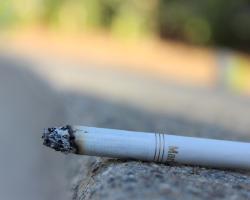Breast self-examination should be an essential element of breast cancer prevention among adult women. When done regularly, it can help detect a cancerous lump or other alarming symptoms at an early stage.
Physicians stress that finding lesions at an early stage gives a much greater chance of recovery than in the advanced form of the disease.
What to pay attention to
Apart from lumps, there are other breast lesions which may be symptoms of cancer. For example, redness of a part of or the whole breast is a characteristic feature of inflammatory breast cancer.
You should also pay attention to any changes in breast size, changes in nipples – such as being pulled in, rashes, the wrinkling of the skin, and chronic pain in the breast or armpit.
Self-exams should be done between the 7th and 10th day of the cycle in menstruating women, while postmenopausal women should choose one fixed day of the month.
How to do a breast self-exam
Properly done self-examination should consist of three stages.
Stage I involves examination in front of a mirror. You need to get undressed from the waist up, then stand in front of a mirror and lift your hands up. You should look for any changes in the shape of the breast, skin discoloration, and check whether the skin gets wrinkled or tense. Then the same observation should be made with your hands put on your hips. Finally, you should squeeze your nipples and check whether any liquid is discharged.
Stage II of the examination is carried out in the shower. Your right hand should be placed at the back of your head, and the left one – on the left breast. Lightly press the breast with the three middle fingers and make small circles along the breast from top to bottom and back. The same must be repeated with the right breast.
Stage III should be performed while lying down by sliding a pillow or rolled towel under the right shoulder and putting your right arm under your head. The three middle fingers of the right hand (just like in the shower)should examine the right breast, and then the same should be repeated with the left breast. While still lying, place your hands along the torso and explore the opposite armpits with them to see if your lymph nodes are enlarged.
Any suspicion of lesions should be reported to your doctor immediately.
Is the examination correct?
When in doubt whether you perform breast self-examination properly, you can ask your gynaecologist for help and instruction. There are also breast self-examination courses organised as part of Open Days at Cancer Centres.
Video instructions for breast self-examination are placed on many websites of breast cancer associations. There are also special free phone applications reminding about the self-examination every month, and containing verbal or visual instructions.
Breast self-examination instructions can also be found in the guidance issued under the framework of the campaign "Rak. To się leczy!" (Cancer. It can be healed!)
In addition to monthly breast self-examination, women should not forget about regular mammography and breast ultrasound examinations.
What is breast cancer
Breast cancer is a tumour developing from the inner lining of the ducts or lobules of the breast. It is the most common malignancy among women, but can also occur in men. Every year in Poland there are around 12,000 new cases of breast cancer and nearly 6,000 thousand deaths.
Risk factors include age (between 50 and 70 years of age), family history, obesity, arterial hypertension and excessive alcohol consumption.









Comments (0)